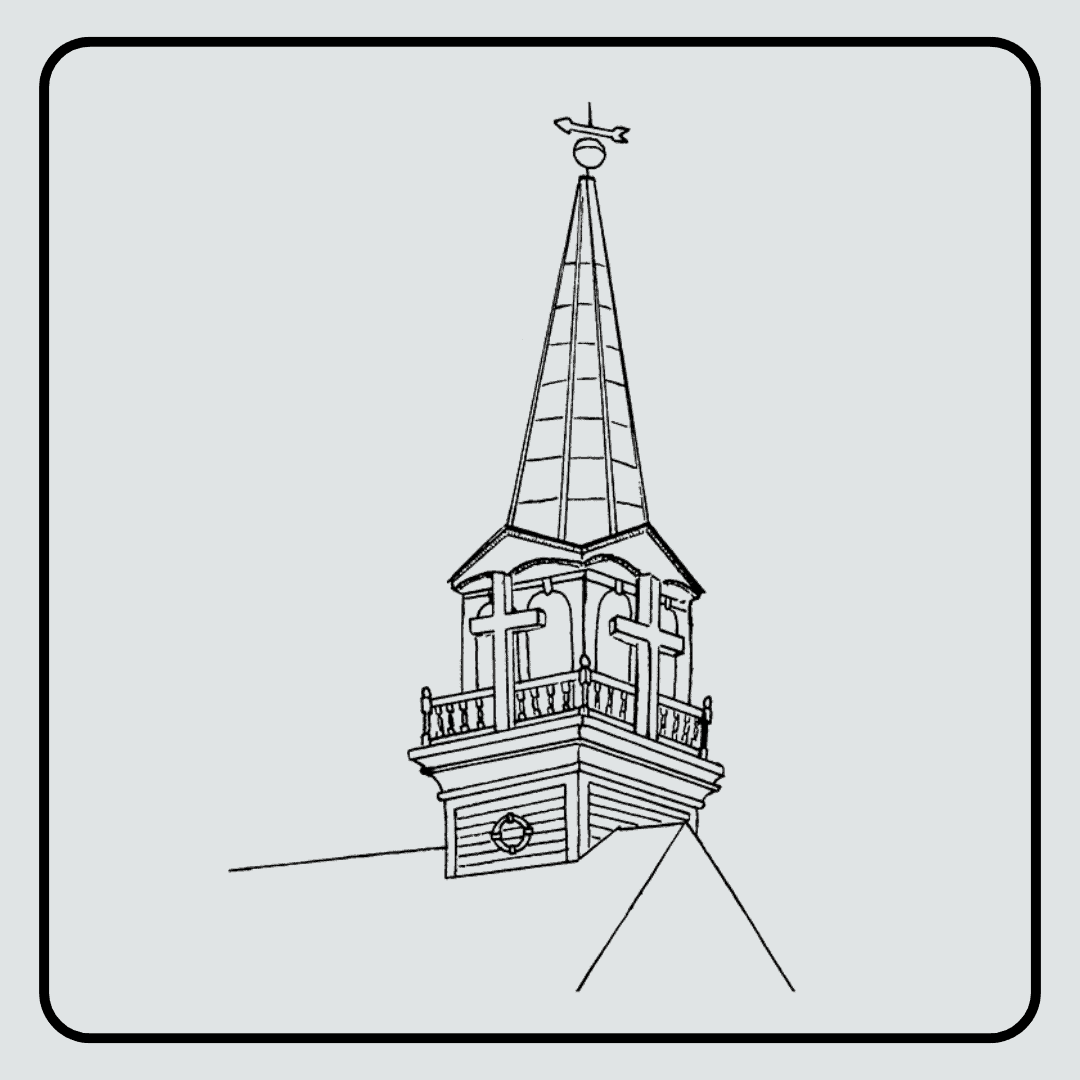The Lenten Season
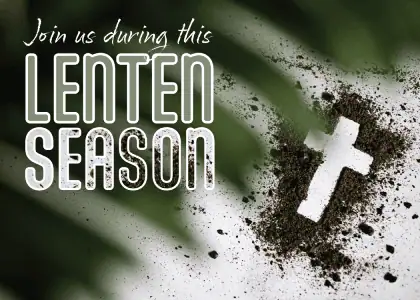
Lent is the solemn observance in the Christian liturgical year commemorating the 40 days Jesus spent fasting in the desert and enduring temptation by Satan before beginning his public ministry. Lent has traditionally been a season of preparation and self–examination that reflects on our need for reconciliation with God and our neighbor.
Lent takes its name from an ancient Anglo-Saxon word referring to the lengthening of the daylight hours over the season’s seven weeks. It is a welcomed season of growth after the cold, dark winter in the natural world. But there is a parallel growth that can happen in the spiritual aspect of our lives. During Lent, we are invited to a more deliberate and disciplined practice of prayer, worship, study, and service. We spend time together in shared meals, in programs that help us grow, and in worship that helps us find meaning in the story of Jesus’ last week in Jerusalem.
Although not dictated or required by the Moravian Church, many of the faithful voluntarily commit to fasting or giving up certain types of luxuries as a form of penitence during the season of Lent.
Ash Wednesday is the first day of Lent. For some Christians, it may include the wearing of ashes on the forehead as a visible symbol of humility and repentance. Beginning with Ash Wednesday, a worship service is held each Wednesday evening in Lent.
Shared Lenten Services
The Schoeneck Moravian Church congregation and the Nazareth Moravian Church congregation worship together for the Lenten season. Each year, there is a theme chosen for our Lenten Services.
The Mid-Week Lenten worship services are held every Wednesday evening at 7:00 pm. They are about an hour long and may include a liturgy, scripture lessons, hymns, prayers, a sermon, an offering, and special music. There is no nursery service available, but as always, children are welcome in worship.
Schoeneck and Nazareth take turns hosting the worship services on Wednesday evenings, alternating years. (Sunday services remain at each individual church.)

We invite you to grow closer to God and to one another by participating in our Lenten activities.
For 2026, our midweek Lenten services are being hosted by Nazareth Moravian Church. They are located on the circle in Nazareth, and their address is 4 S. Main Street, Nazareth PA 18064. Street parking is usually available near the church, with accessible parking spaces right in front.
Ash Wednesday — Wed. Feb. 18, 2026 at 7:00 pm
Ash Wednesday, one of the holiest days in the Christian year, marks the beginning of Lent and is always 46 days before Easter Sunday. Sundays are excluded from Lent because each and every Sunday is considered a celebration of the Resurrection of Christ.
Ash Wednesday’s roots trace back to ancient Jewish practices of penance and fasting, with its Christian adaptation stemming from the 11th century.
Our Ash Wednesday worship service focuses our hearts on repentance and prayer, usually through personal and communal confession. Special music is provided by a combined choir with members from both the Schoeneck and the Nazareth congregations.
There is no nursery service available, but as always, children are welcome in worship.
Ashes may be offered to the congregation during the Ash Wednesday service. You may choose to participate if you so desire. Ashes can be placed on your forehead or on the back of your hand. The ashes used are gathered from the burning of the palms from the previous year’s Palm Sunday.
First Sunday in Lent Holy Communion —
Sun. Feb. 22, 2026 at 8:00 am & 10:30 am
On the First Sunday in Lent, Schoeneck celebrates the sacrament of Holy Communion at both Sunday morning worship services. The Moravian Church practices open communion — if you have been baptized, regardless of denomination, we invite you to partake in the Sacrament of Holy Communion with us.
Holy Week / Passion Week
Holy Week is the final week of the Lenten season, beginning seven days before Easter with Palm Sunday and ending with Holy Saturday. Holy Week, most often referred to a “Passion Week” by Moravians (from Latin Passus, to suffer), is a week of profound reverence and prayer.
Our worship services during Holy Week are designed so that as we gather in worship each day, we journey with Jesus toward his death on the cross. Schoeneck and Nazareth each celebrate Holy Week services at their respective churches.
Palm Sunday —
Sun. March 29, 2026 at 8:00 am & 10:30 am
On this day, we celebrate Jesus’ triumphant entry into Jerusalem, where the crowds greeted him by shouting “Hosanna” and waving palm branches. Our Palm Sunday worship services are a reminder for us to welcome Jesus into our hearts and be ready to follow Him. Palm branches are handed out with the bulletins, we pray a special Palm Sunday liturgy, and singing the joyous “Hosanna” is a beloved tradition. The service features special music from our Music Ministry with both instrumental and voice choirs participating.
Moravian Holy Week Readings — 7:00 pm on Mon. March 30th, Tues. March 31st, & Wed. April 1st, 2026
On Holy Monday, Holy Tuesday, and Holy Wednesday we continue our walk with Jesus towards his crucifixion with our Moravian Holy Week Readings services.
Moravians have long had the practice of gathering each night of Passion Week to read the events of that day in Jesus’ life from the Scriptures. Our service book, Readings for Holy Week, represents a harmony account of the sufferings, death, resurrection, and ascension of our Lord Jesus Christ as it is found in the four Gospels of the New Testament.
These readings tie together the Scriptures in a story-like format and are interspersed with the singing of hymn verses that relate to the events described.
These worship services are relatively informal and about 45 minutes in duration. There is no liturgy or sermon — the scriptures and hymns alone tell the story.
Moravians have shared a version of this moving collection of texts and hymns for more than 250 years .
Readings for Holy Week books are provided of course, but if you would like to purchase your own copy to use each year, please click here.
There are two versions available – Readings for Holy Week Music Edition (brown cover) or Readings for Holy Week Large Print Edition (purple cover).
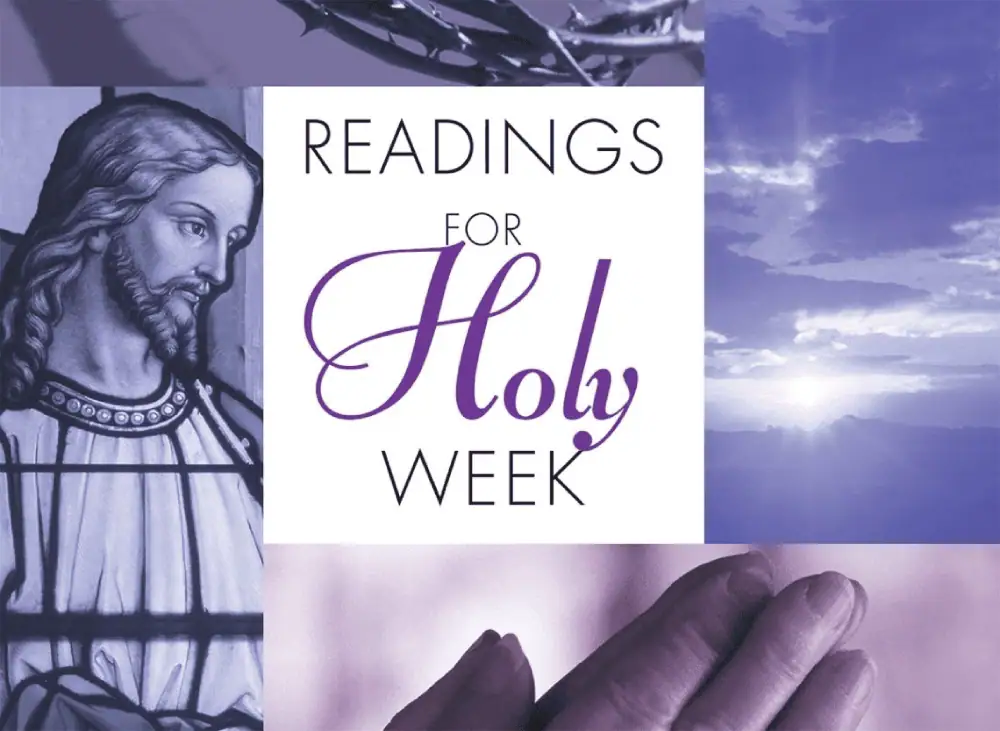
Maundy Thursday Holy Communion —
Thurs. April 2, 2026 at 7:00 pm
Maundy Thursday is the most significant celebration of Holy Communion of the year, as it is the commemoration of the Last Supper of Jesus Christ.
Jesus established the sacrament of Holy Communion as he celebrated the feast of Passover with his disciples. The Last Supper was also Christ’s farewell to His assembled disciples, some of whom would betray, desert, or deny Him before the sun rose again.
The term Maundy is from the Latin word mandatum, a verb that means “to give,” “to entrust,” or “to order”. The term is usually translated in English as “commandment.”
During his meal with the disciples Jesus said, “A new commandment I give to you, that you love one another: just as I have loved you, you also are to love one another. By this all people will know that you are my disciples, if you have love for one another.” (John 13:34-35)
At Schoeneck, Maundy Thursday Holy Communion is a solemn worship service that recalls Jesus’ prayers in the Garden of Gethsemane and the betrayal by Judas which leads to Jesus’ arrest.
Schoeneck Moravian Church practices open communion — if you have been baptized, regardless of denomination, we invite you to partake in the Sacrament of Holy Communion with us.
There is no nursery service available, but as always, children are welcome in worship.
Good Friday — Fri. April 3, 2026
Good Friday marks the culmination of the events of Holy Week, and is one of Christianity’s most important and holy days. Jesus, the Lamb of God who takes away the sins of the world, suffered and died to save humanity from our sins and to restore our relationship with God. It is the ultimate act of love and sacrifice. Come to one of our Good Friday services to reflect on your place in the very human story of Jesus’ trial, crucifixion, and death.
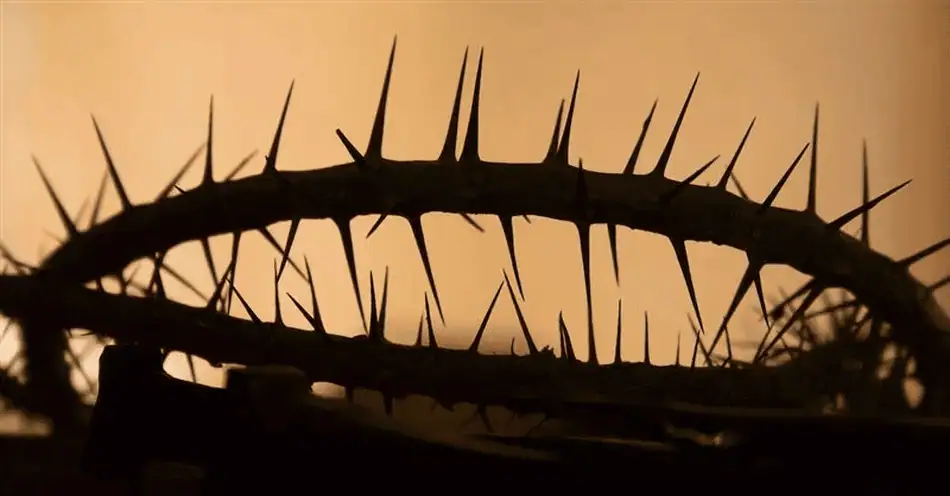
Good Friday is a day of mourning and reflection. We ask that you enter the sanctuary with reverence, and to leave in silence.
The Nursery is not available during these worship services, but children are always welcome in worship. Any noise they may make is simply a reflection of their innocence and is not frowned upon even at these most holy services. We invite you to include them, as Jesus died for their salvation as well.
1:45 pm — Holy Communion
Holy Communion is offered for those who were unable to join us for the Maundy Thursday Holy Communion. If you attended the Thursday evening worship service and received Holy Communion, please join us at 2:30 pm for the Good Friday Vigils.
2:30 pm — Good Friday Vigils
At this solemn worship service, we will continue our journey with Jesus to the cross with our Holy Week Readings. The readings include the account of Jesus’ trial before Pilate, and his crucifixion, suffering, and death on the cross. Our bell tolls 33 times at the time of Jesus’ death — once for each year of his life on earth.
7:00 pm — Good Friday Tenebrae Service
Please note: This service will not be held in 2025.
“Tenebrae” is a Latin word meaning “darkness.” An ancient Good Friday ritual, a Tenebrae service increases in darkness by gradually extinguishing candles to symbolize the coming darkness of Jesus’ death. Many people find the Tenebrae service a beautiful and meaningful way to honor Christ’s sacrifice on the cross.
Traditionally, the story of the suffering and death of Jesus from John’s gospel is divided into 16 readings. After each segment of the story is read, a candle is extinguished. After the fifteenth reading, which confirms that Jesus had died on the cross, the last of the candles representing Jesus Christ, is taken away, and a loud sound (called strepitus in Latin) is made to convey the sense of the total loss of God’s presence and the effect of the death of Jesus on the universe. The Christ Candle is then returned, and the final story of Jesus’ burial in a borrowed tomb is read in almost full darkness.
Worshipers leave in silence to ponder the impact of Christ’s death. (The sanctuary lights are raised slightly so that the congregation can safely move about.)
Great Sabbath Lovefeast — Sat. April 4, 2026 at 7:00 pm
The day between Christ’s crucifixion and His resurrection would have been a time of despair and confusion for the disciples as they sought to understand the treachery of Judas and the apparent murder of Jesus. The disciples had dispersed when Jesus was arrested, and they spent the first Holy Saturday in hiding for fear of also being arrested.
In the Moravian tradition, Holy Saturday is called the Great Sabbath in memory of the time Jesus “rested” in the tomb.
As Jesus died he called out, “It is finished!” No further atonement was required; sin and death had been conquered with Christ’s sacrifice on the cross. His work was done; he could rest from his labor.
Jesus’ disciples were grieving, lost, and afraid, but we know the full story — Jesus’ death on the cross was not the end, but the beginning of humanity’s redemption.
Therefore, our Great Sabbath Lovefeast is a reminder that even in the darkest of times, there is always hope.
It is a time of reflection, preparation, and anticipation as we await the arrival of Easter and the celebration of the resurrection of Jesus Christ. Special Music is provided by our Brass Choir and the Senior Choir.

The Season of Easter
Easter Sunday is not part of Lent, but the first day of the liturgical season of Easter, which lasts for 50 days until Pentecost Sunday. Easter is the celebration of the Risen Christ — the culmination of the Passion of Christ. It is a celebration of the triumph of Christ over death, sin, and the power of evil through His sacrificial death. Easter Sunday is the oldest Christian holy day, and the most important day of the church year.
The Easter season is a time of joy, renewal, and hope. With Christ’s death and resurrection we are assured of the fact, “by the grace of God are you saved through faith in Christ Jesus.”
Resurrection Sunday — Sun. April 5, 2026
Resurrection Sunday is the joyful celebration of Jesus Christ’s resurrection from the dead, which marks the triumph of good over evil, sin, and death. It is the fulfillment of God’s plan of salvation for humanity — that those who trust in God and accept Jesus Christ as their Lord and Savior will not perish, but have eternal life.
5:45 am — Easter Sunrise Service
The Easter Sunrise Service of the Moravian Church dates back to 1732, when the first service was held in Herrnhut on the estate of Count Nicholas Ludwig Von Zinzendorf. Those early Moravians gathered at the first light of dawn among the graves of their departed brothers and sisters, to hail the resurrection of Jesus Christ from the dead, and to sing hymns of praise.
The Moravian Easter Sunrise Service has been a powerful tradition passed down from generation to generation, knitting together old and young, the living and the dead, individual congregations, and Moravians with the surrounding community.
Here at Schoeneck, we begin our Easter Sunrise Service at approximately 5:45 am in the church sanctuary. This service will include a processional walk to God’s Acre, Schoeneck’s cemetery, which is located just north of the church at the intersection of N. Broad St. Extension and W. Beil Avenue.
Those who cannot walk up the hill are more than welcome to drive to the cemetery. Our Easter Sunrise Service concludes in the cemetery with music provided by our Brass Choir.
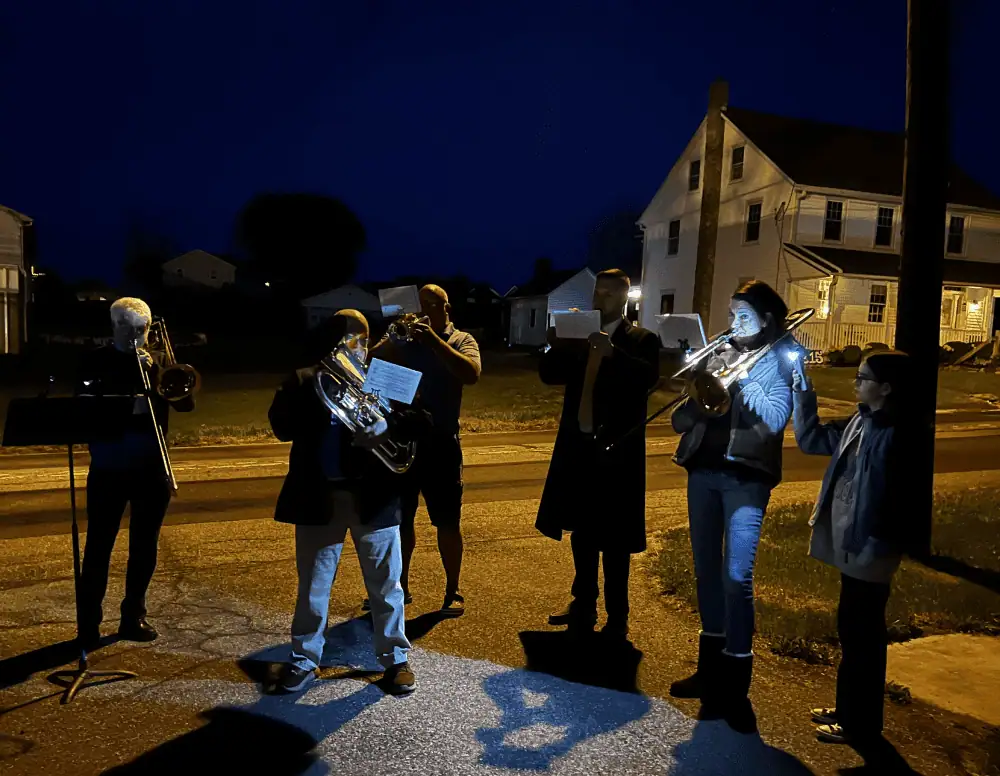
Easter Breakfast
Whether or not you attend the Easter Sunrise service, we invite you to join us for an Easter Breakfast! It is hosted by the “Manly Men of Schoeneck” and begins immediately following the Easter Sunrise Service.
8:00 & 10:30 am — Easter Worship Services
The Lord Is Risen! The Lord Is Risen Indeed!
Our Easter worship services are ones of immense joy and hope, as we celebrate the victory of light over darkness, of life over death, and the depth of God’s love for humanity. Our Easter worship services are profound reminders of the transformative power of faith and the enduring message of hope that resonates throughout the ages. We pray our beloved and triumphant Easter liturgy. Special music is provided by all of the choirs in our Music Ministry.
Why is Easter on a different day each year?
Working backward, the day Easter falls each year is related to something known as the “paschal full moon”. The name “paschal” is derived from Pascha, a transliteration of the Aramaic word meaning Passover. The date of Easter is associated with the date of the Jewish feast of Passover, during which Christ was crucified. The date of Easter is determined as the first Sunday after the paschal full moon that falls after the spring equinox. Easter is delayed by one week if the full moon is on Sunday. Therefore the date for Easter always falls on a Sunday between March 22nd and April 25th.
